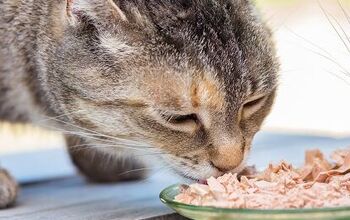How Often Should You Change Cat Litter?

Caring for your feline friend comes with many responsibilities, and maintaining a clean litter box is among the most crucial aspects of their hygiene. A clean litter box ensures your cat stays happy and healthy while keeping your home fresh and odor-free. However, many cat owners are unsure how often to change their pet's litter. The answer depends on several factors, including the type of litter you use, the number of cats in your home, and your cat's individual preferences. Here’s a comprehensive guide to help you manage your cat’s litter box effectively.
Why Litter Box Hygiene Matters
Cats are renowned for their cleanliness, and a dirty litter box can cause significant distress. In some cases, it can even lead to behavioral problems, such as litter box avoidance. This can result in inappropriate elimination around your home, creating additional challenges. Moreover, a poorly maintained litter box can become a breeding ground for bacteria and ammonia buildup, which can be harmful to both your cat and your household.
Regular maintenance also offers the opportunity to monitor your cat’s health. Changes in urination or defecation habits can signal underlying health issues, making a clean litter box essential for both hygiene and early detection of potential problems.
Daily Maintenance: The Key to Odor Control
Daily maintenance is vital for keeping your cat’s litter box fresh and inviting. Scoop out waste at least once a day - this not only prevents odors but also ensures your cat always has a clean space. Clumping litter can simplify this task by forming solid clumps around waste, making removal more efficient. However, whether you use clumping or non-clumping litter, daily scooping is non-negotiable.
If you have multiple cats, it’s recommended to scoop more frequently. The general rule is to provide one litter box per cat, plus one extra, to accommodate their needs and minimize overcrowding.
Full Litter Changes: Timing Matters
How often you completely change the litter depends on its type and usage. For clumping litter, a full change every two weeks is usually sufficient if you scoop daily. Non-clumping litter, which absorbs odors less effectively, requires more frequent changes, typically once a week. Keep an eye on the litter’s condition, and replace it if it appears saturated or emits strong odors.
Natural, biodegradable litters like corn-based products or wood pellets may need even more frequent changes. These materials break down faster and can retain odors more readily than traditional litters. Assess their condition regularly to ensure they remain hygienic.
Cleaning the Litter Box
Good hygiene extends beyond just changing the litter. The litter box itself should be cleaned thoroughly every two to four weeks. Use hot water and a mild, unscented detergent to scrub away residue and odors. Avoid harsh chemical cleaners or strong scents, as these can deter your cat from using the litter box. Dry the box completely before adding fresh litter to maintain a welcoming environment for your pet.
Factors That Influence Cleaning Frequency
Several factors can impact how often you need to clean and change your cat’s litter:
- Number of Cats: More cats mean more frequent scooping and changes.
- Type of Litter: Clumping litter lasts longer between changes, while biodegradable or non-clumping litters require more frequent attention.
- Cat Preferences: Some cats are more particular about cleanliness than others and may avoid a litter box that isn’t pristine.
Quick Tips for Effective Litter Box Management
- Scoop waste daily to prevent odors and keep the box inviting.
- Use clumping litter for easier waste removal and longer intervals between full changes.
- Clean the litter box thoroughly every few weeks using mild, unscented products.
- Provide one litter box per cat, plus one extra, to avoid overcrowding.
- Monitor the litter box for signs of wear, such as persistent odors or buildup, and adjust your cleaning schedule accordingly.
By understanding your cat’s needs and maintaining a regular cleaning routine, you can create a hygienic and comfortable space for your feline companion.

A proud mama to seven dogs and ten cats, Angela spends her days writing for her fellow pet parents and pampering her furballs, all of whom are rescues. When she's not gushing over her adorable cats or playing with her dogs, she can be found curled up with a good fantasy book.
More by Angela Vuckovic

























